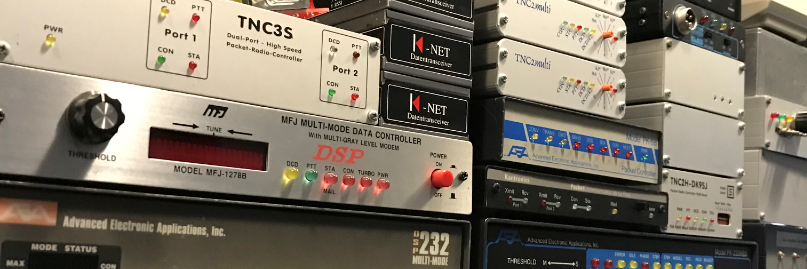
It is now possible to order the NinoTNC as a Pre-Order. It is expected to be delivered in May.
Order it at… https://www.etsy.com/listing/771765516/preorder-n9600a3-circuit-board-and-cpu
I ordered two, I am very curious. Just wait for the B.O.M (Bill Of Materials)file and then I can order the components.
PRE ORDER LISTING–PLEASE READ: This is a revision of the N9600A that eliminates the need for a USB-serial daughter board, which is now in short supply in the US. This PCB, N9600A3, provides pads to use an MCP2221A-I/P USB bridge on-board, along with a USB-B connector. I expect to have stock ready to ship in May 2020, but that date may extend due to current global events interrupting supply chains.
More information about this device is available here: http://tarpn.net/t/nino-tnc/nino-tnc.html
This kit contains the printed circuit board and programmed dsPIC CPU required to build one TARPN N9600A3 packet radio terminal node controller (TNC). This kit does not include any other parts from the bill of materials, you will have to obtain more parts from a supplier to build a complete working TNC. Basic electronics tools and skills will be required to assemble a working TNC. You’ll need to be competent with a soldering iron, and have a supply of small-gauge solder. Side cutters will be necessary, as well as tweezers or needle-nose pliers.
The PCB is a high-quality 4-layer board with blue finish and white silkscreen for part locations and identifiers. It requires only thru-hole parts for assembly.
Once assembled, the N9600A3 TNC acts as a multi-mode data modem you can use to create narrow-band datalinks with VHF and UHF communication radios. The N9600A3 TNC sends and receives data using several user-selectable modulation methods and link protocols: traditional AX.25 modes at 1200 bps AFSK (like APRS) and 9600 bps using GMSK (compatible with the G3RUH standard).
N9600A3 differs from previous revision with the incorporation of an on-board USB bridge and USB-B connector, as well as 2 more DIP switch options that will enable several future firmware features that are under development now. All these future firmware upgrades will be supported in N9600A2 as well, through KISS options (N9600A2 does not have as many switches).
The TNC also supports an experimental layer 2 protocol called IL2P which incorporates several improvements, including Forward Error Correction. IL2P can be used as an alternative to AX.25 on both 1200 AFSK and 9600 GMSK modes. You can read more about IL2P here:
http://tarpn.net/t/il2p/il2p.html
9600 bps GMSK will not work with all voice-band radios. It requires a radio with a data port (direct modulator/discriminator connection) or other wide-bandwidth connection. It should be possible to use 1200 bps AFSK mode with most voice-band radios, once you have obtained (or made) suitable connection cables.
You can find more information about this TNC, build instructions, bill of materials, configuration tips, and a community of users at the following links:
http://tarpn.net/t/nino-tnc/nino-tnc.html
https://groups.io/g/ninotnc/topics
Some disclaimers: We are selling this kit at very close to our cost, in the hopes of growing the Terrestrial Amateur Radio Packet Network (TARPN) and the entire packet radio community. You must assemble and use this device at your own risk. Operation of any radio device on the Amateur Radio bands requires applicable licensing by the government of the country where the device is used. If you damage the PCB or CPU beyond repair during assembly or use, you’ll need to pony up another $7.57 plus shipping to order a replacement. We do not guarantee suitability for use for commercial purposes. Do not use this device as part of a life-saving system.
I hope that you enjoy assembling and using this device, and grow a packet radio network where you live!
73,
Nino
KK4HEJ



































